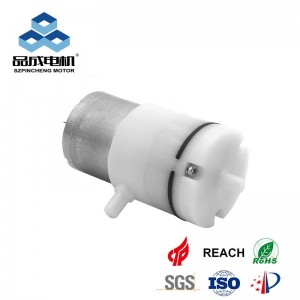If you're integrating a small vacuum pump into a medical device, laboratory instrument, or industrial application, one of the most critical questions is: "How strong of a vacuum can it actually pull?" Specifically, for a diaphragm vacuum pump, the answer is defined by its ultimate pressure, a key specification that determines its suitability for your project.
This article breaks down the factors that influence the vacuum level of these pumps and what you can realistically expect.
What is a Diaphragm Vacuum Pump?
A diaphragm vacuum pump is a type of positive displacement pump that uses an oscillating elastomeric diaphragm, check valves, and a chamber to create a vacuum. Their oil-free, dry operation makes them ideal for applications where cleanliness and portability are paramount.
The Typical Vacuum Range for Small Diaphragm Pumps
While capabilities vary by model and quality, most small vacuum pump units of the diaphragm type achieve an ultimate vacuum (the lowest pressure they can reach) in the following range:
15 to 29.9 inches of Mercury (inHg) or 50 to 760 Torr or -7 to -100 kPa (gauge).
-
Lower End (General Purpose): ~15-20 inHg (-50 to -67 kPa). Common in lower-cost pumps for applications like air sampling, simple suction, or holding.
-
High End (Medical & Laboratory Grade): ~22-29.9 inHg (-75 to -100 kPa). These are high-performance pumps used in demanding applications like blood analysis, filtration, and automated diagnostic equipment.
For context:
-
Atmospheric Pressure: 0 inHg (gauge) or 101.3 kPa (absolute)
-
Perfect Vacuum: 29.92 inHg (gauge) or -101.3 kPa (gauge)
This means a high-quality diaphragm vacuum pump can remove about 95-99% of the air from a sealed volume.
Key Factors That Limit How Low a Diaphragm Pump Can Go
Several inherent design features prevent a diaphragm pump from reaching a perfect vacuum:
-
Volumetric Efficiency and "Dead Volume": No pump can completely eliminate all air from the compression chamber. A tiny amount of residual gas, known as "dead volume," remains trapped after each stroke and is re-expanded, limiting the lowest achievable pressure.
-
Seal and Valve Leakage: Microscopic leaks past the diaphragm seal or the check valves can allow air to seep back into the vacuum side. High-quality pumps use precision-machined components and superior materials to minimize this.
-
Material Outgassing: Under vacuum, certain materials (like some plastics or rubbers) can release trapped gases or vapors from within their structure. This phenomenon, called outgassing, contributes to the pressure inside the system and creates a floor that the pump cannot overcome.
-
Diaphragm Flexibility and Seal: The flexibility of the diaphragm itself limits the compression ratio. A more rigid diaphragm can create a stronger vacuum but may require a more powerful motor and has different longevity trade-offs.
Applications by Vacuum Strength
-
Low Vacuum (15-20 inHg / -50 to -67 kPa): Suction cups for holding, simple pneumatic actuation, air sampling bags, basic suction devices.
-
Medium Vacuum (20-25 inHg / -67 to -85 kPa): Medical suction, blood pressure monitoring, breast pumps, automated liquid handling, packaging machines.
-
High/Deep Vacuum (25-29.9 inHg / -85 to -100 kPa): Laboratory filtration, vacuum degassing, semiconductor handling, advanced diagnostic instruments.
How to Choose the Right Pump for Your Vacuum Needs
-
Check the Spec Sheet: Always look for the "Ultimate Vacuum" or "Final Vacuum" rating, measured in inHg, kPa, or Torr. This is the pump's lowest possible pressure.
-
Consider Flow Rate: A pump might achieve a deep vacuum, but if it has a low flow rate (CFM or LPM), it will take a very long time to get there. You often need to balance ultimate vacuum with speed.
-
Understand Your System's Needs: The pump must be strong enough to overcome any leaks in your system and still achieve the required working pressure for your application.
-
Prioritize Quality: For critical applications, invest in a pump from a reputable manufacturer that uses high-quality valves and seals to ensure it consistently meets its rated vacuum performance.
Conclusion
So, how low can a small diaphragm vacuum pump go? While it cannot achieve the extreme vacuum of large, oil-sealed rotary vane pumps, a high-quality diaphragm vacuum pump is exceptionally capable, reaching vacuum levels as low as 29 inHg (-98 kPa). This makes it a powerful, clean, and reliable solution for a vast array of medical, industrial, and laboratory applications. When selecting a pump, carefully match its ultimate vacuum and flow rate specifications to your system's requirements to ensure optimal performance.
Keywords used throughout: small vacuum pump, diaphragm vacuum pump, ultimate vacuum, medical device, laboratory, vacuum pressure, inHg, kPa.
you like also all
Post time: Sep-15-2025




